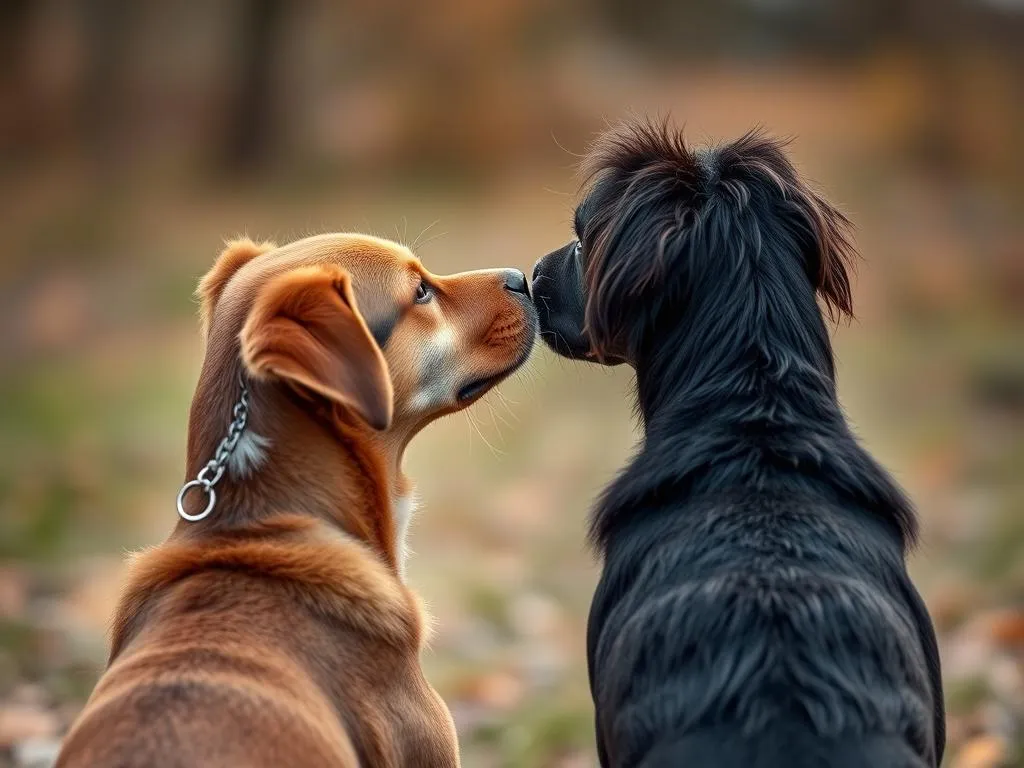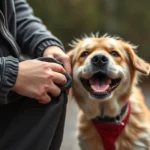
Introduction
Dog behavior is a fascinating aspect of canine life that is essential for both training and bonding. One behavior that often raises eyebrows among dog owners is the act of butt smelling. So, why do dogs smell each other’s butts? This natural behavior not only serves as a form of communication but also plays a vital role in the social structure among dogs. Understanding this behavior is crucial for effective training and for fostering a strong relationship between you and your dog.
In this article, we’ll delve into the science behind dog behavior, explore the implications of butt sniffing for dog training, and clarify common misconceptions surrounding this natural instinct.
The Science Behind Dog Behavior
Understanding Canine Senses
Dogs experience the world primarily through their sense of smell. In fact, a dog’s sense of smell is estimated to be between 10,000 to 100,000 times more acute than that of humans. While humans have around 6 million scent receptors in their noses, dogs boast up to 300 million. This extraordinary olfactory ability allows dogs to gather a vast amount of information about their environment and other dogs.
When dogs meet, they often engage in butt sniffing, which is a way for them to collect detailed information about each other. Through their noses, they can learn about another dog’s identity, diet, health, and emotional state, making this behavior both practical and instinctual.
Social Behavior in Dogs
Canine social structures are complex and largely dictated by scent. Dogs are pack animals, and their social interactions are heavily influenced by their ability to communicate through various means, with scent being the most significant. In the wild, sniffing each other’s behinds establishes social hierarchies and strengthens bonds among pack members. This behavior is not just a quirky habit; it serves as an essential tool for understanding social dynamics.
Why Dogs Smell Each Other’s Butts
The Role of Anal Glands
One of the primary reasons dogs engage in butt sniffing is due to the function of their anal glands. These glands are located on either side of a dog’s anus and release secretions that provide valuable information about the dog’s health, diet, and emotional state.
When a dog sniffs another dog’s rear, they are essentially gathering data about that dog’s wellbeing. The anal gland secretions can convey messages about the other dog’s hormonal status, which is particularly important for mating. For example, a female in heat will have a different scent than a male, allowing dogs to communicate critical reproductive information through scent.
Communication Through Scent
Scent is a powerful form of communication for dogs. When they sniff each other’s butts, they are not only picking up on the aforementioned health indicators but also learning about the other dog’s age, sex, and mood.
For instance, if a dog smells a more anxious or fearful dog, it may adjust its own behavior accordingly. Conversely, a confident, relaxed dog may be more appealing for socialization. This communication through scent is fundamental for establishing relationships and understanding social dynamics among dogs.
Natural Instincts and Socialization
This behavior is also deeply rooted in a dog’s ancestral instincts. Historically, dogs relied on scent to gather information about their environment and pack members. While modern dogs have adapted to living alongside humans, many of these instinctual behaviors remain intact.
Socialization plays a crucial role in how this behavior develops. Puppies that are exposed to various dogs early in life are more likely to engage in butt sniffing as a normal part of their social interactions. Conversely, dogs that have not been socialized may display anxiety or aggression instead of curiosity when encountering other dogs.
Implications for Dog Training
Understanding Your Dog’s Behavior
Recognizing the signs of curiosity and social behavior is essential for any dog owner. When dogs meet, observing their body language can provide insights into their intentions. A relaxed body posture, wagging tail, and friendly approach are indicators that the dog is open to social interaction.
If your dog is exhibiting excessive curiosity or relentless sniffing, it may be necessary to step in. Understanding these behaviors is key to addressing any potential issues during training.
Training Strategies to Address Butt Sniffing
While butt sniffing is a natural behavior, there are situations where it may become problematic—especially if it leads to excessive excitement or aggression. Here are a few strategies to manage this behavior:
-
Redirect Attention: If your dog is overly fixated on sniffing another dog’s behind, redirect their attention with a toy or command. This helps them focus on you rather than the other dog.
-
Positive Reinforcement: Reward your dog when they greet another dog calmly without excessive sniffing. This encourages more appropriate social behavior.
-
Controlled Socialization: Organize controlled playdates with other dogs. This allows you to monitor interactions and guide your dog’s behavior positively.
Promoting Positive Social Interactions
Encouraging healthy dog-to-dog interactions is crucial for fostering strong social skills. Here are a few training techniques:
-
Gradual Introductions: Always introduce dogs in a neutral environment to minimize territorial behavior.
-
Use of Commands: Teach your dog commands like “leave it” or “come” to help manage their behavior during interactions.
-
Positive Play: Encourage playtime that promotes healthy interactions, such as fetch or tug-of-war, which can help dogs bond without relying solely on sniffing.
Common Misconceptions About Butt Sniffing
Myths vs. Facts
Many misconceptions surround the act of butt sniffing. Some people believe it’s a sign of dominance or aggression, but that simply isn’t true. Rather, it is a form of greeting and socialization.
Dogs do not engage in butt sniffing to assert dominance; instead, they are gathering information. Debunking these myths is essential for a better understanding of canine behavior.
The Importance of Context
Understanding when butt sniffing is normal versus when it indicates behavioral issues is vital for dog owners. If your dog is consistently aggressive or overly anxious around other dogs, it may be a sign of underlying behavioral issues that need to be addressed.
However, if the sniffing is a brief, friendly interaction, it is usually perfectly normal. Observing the context and body language of both dogs during these interactions can help clarify the situation.
Conclusion
Understanding why dogs smell each other’s butts is essential for any dog owner. This natural behavior serves as a vital form of communication and social bonding among dogs. Recognizing the implications of this behavior can enhance your dog training efforts and improve your relationship with your canine companion.
By embracing and understanding these natural behaviors, you can foster a more harmonious environment for both you and your dog. Dogs are complex creatures, and understanding their social behaviors is key to being a responsible and informed pet owner.
FAQs
-
Why do dogs always sniff each other’s butts?
Dogs sniff butts as a way to gather information about each other, including health, diet, and emotional state. -
Is butt sniffing a sign of dominance?
No, butt sniffing is not a sign of dominance; it is a form of social greeting and communication among dogs. -
Can I stop my dog from sniffing other dogs?
While you can manage excessive sniffing through training and redirection, it is essential to allow some level of sniffing as it is a natural behavior. -
What should I do if my dog becomes aggressive during sniffing?
If your dog shows aggression, it is vital to seek the help of a professional dog trainer or behaviorist to address the underlying issues. -
Is butt sniffing common among all dog breeds?
Yes, butt sniffing is common among all dog breeds as it is an instinctual behavior related to scent communication.









